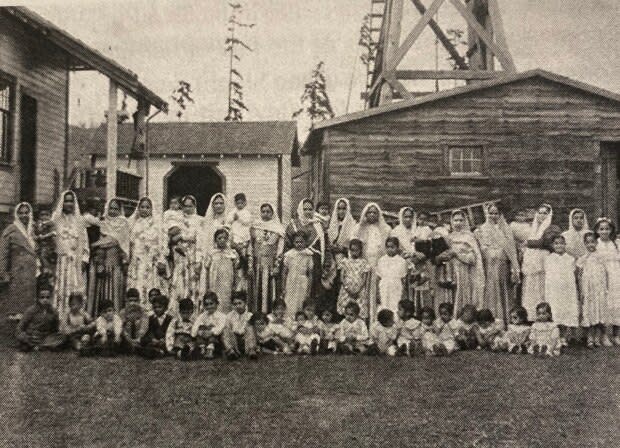B.C. exhibit marks 100 years since policy change allowed South Asian women to join their husbands in Canada
It's been 100 years since immigration laws changed allowing women and children from South Asia to join their male relatives in Canada.
The policy change was passed just before Christmas in 1919, permitting the families of immigrant male workers in Canada to move here and settle down.
The Sikh community on Vancouver Island is marking the historical milestone this month with an exhibit that debuts at Victoria city hall on Monday.
"This piece [of history] is not widely known," said Mahinder Kaur Doman Manhas, author of a book on the subject.
Her book, Zhindagee: Selected stories from our first daughter, documents the settlement of families in B.C. after the policy change and is the launching pad for the exhibit this month with the local group, Sikh Youth of Victoria.
It's a topic Manhas is passionate about. She was born and raised on Vancouver Island but grew up with stories from her mother and family friends about the impacts of the policy change.
"I would often hear my mother's peers talking about how lonely it was and how harsh life was without their husbands," she told Robyn Burns, host of CBC's All Points West.
The men would move to Canada for work in the labour and construction industry, she said, while their wives and children stayed in India.
The immigration restrictions meant families were split apart for years.

After the First World War, India — still under British colonial rule — lobbied hard for the immigration ban to be lifted, Manhas said.
The laws were first changed for immigration to Britain in 1918, and then a year later, Canada followed suite.
"Everyone was jubilant," Manhas said. "It was a huge celebration for women and children."
Manhas has been writing and talking about the history of South Asian women in B.C. for more than a decade.
"I used to say, I don't think anyone's listening except myself," she said. "[Recently], people became interested."
She said she hopes the exhibit will help encourage British Columbians to learn more about the history of immigration in the province and contributions of women and their descents from South Asia.
"I would like the younger people to learn their history, and that without this 1919 change of law, know that none of us would be here," she said.
The exhibit, which includes performances and a photo display, launches at Victoria city hall on Monday evening and is part of a one year plan to celebrate the legislative change. a century ago.

